Chemical process engineering
Unlike in mechanical or thermal process engineering, the focus of chemical process engineering is not to change substance properties or the composition of a substance. The central subject of chemical process engineering is the creation of a new substance type through chemical reaction.
The energy required to activate the chemical reaction can be applied through heat. The desired temperature range is achieved by heating or cooling. In this temperature range, the reaction conditions are optimal and undesired side reactions are avoided.
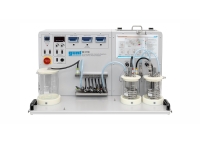
Basic unit for investigation and comparison of different reactors during a saponification reaction
Learning objectives/experiments
- in conjunction with a reactor (CE 310.01 – CE 310.06):
- learning the design and operation of different reactor types
- conversion depending on reactor type
- conversion depending on retention time in the reactor
- conversion depending on temperature
….
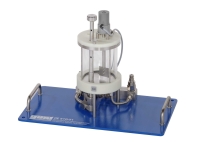
Tank for continuous or batch operation with agitator, heat exchanger and overflow
Learning objectives/experiments
- fundamentals of a saponification reaction
- conversion depending on
- retention time
- temperature
- concentration
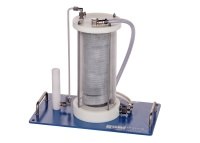
Tube coil as a reaction tube in a water bath for continuous reaction operation
Learning objectives/experiments
- fundamentals of a saponification reaction
- conversion depending on
- retention time
- temperature
- concentration
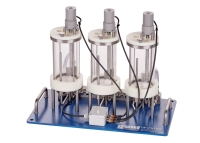
Series connection of three stirred tank reactors
Learning objectives/experiments
- fundamentals of a saponification reaction
- conversion in each reactor depending on
- retention time
- temperature
- concentration
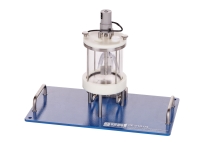
Dewar vessel with stirrer and heat exchanger for isothermal saponification reaction
Learning objectives/experiments
- fundamentals of a saponification reaction
- determination of reaction rate constant
- determination of temperature dependence of reaction rate constant
- conversion depending on
- reaction time
….
- reaction time
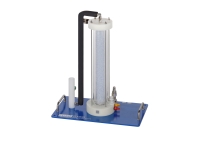
Continuously operated tubular reactor; fixed bed with glass spheres
Learning objectives/experiments
- fundamentals of a saponification reaction
- continuous operation
- conversion depending on
- retention time
- temperature
….
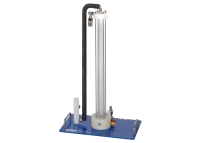
Continuously operated tubular reactor
Learning objectives/experiments
- fundamentals of a saponification reaction
- continuous operation
- conversion depending on
- retention time
- temperature
….
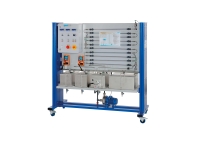
Demonstration of the influence of temperature and reaction period on the alkaline saponification reaction
Learning objectives/experiments
- fundamentals of a saponification reaction
- conversion rate
- as a function of retention time
- as a function of temperature
- as a function of reaction order
Many reactions are too slow for technical applications at ambient temperature because the required activation energy is very high. Catalysts lower the required activation energy and accelerate the chemical reaction. Thus, some reactions would not be possible without a catalyst reducing the energy required for production.
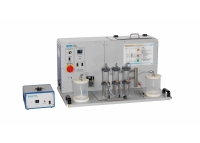
Investigation of catalytic reactions
Learning objectives/experiments
- fundamentals of chemical catalysis
- dependence of the reaction on
- catalyst mass
- temperature
- use of a photometric analyser
….
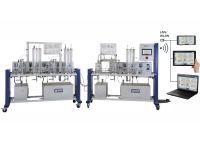
Chemical transesterification of vegetable oils, system control via PLC
Learning objectives/experiments
- production of biodiesel from vegetable oil
- influence of dwell time
- influence of temperature
- chemical transesterification
- phase separation in the gravity field
….
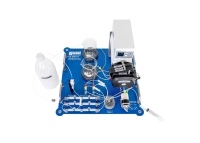
Professional analysis unit for CE 380: detection of glucose
Learning objectives/experiments
- using the flow injection analysis (FIA)
- determining the concentration
- determining the yield for CE 380
In a photochemical activation, the activation energy to enable or accelerate the reaction is applied by means of electromagnetic radiation. When the atoms or molecules absorb this radiation, they achieve a higher energy level and are activated.
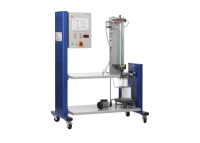
Oxidation of organic substances with hydrogen peroxide and UV light
Learning objectives/experiments
- familiarisation with oxidation with hydrogen peroxide and UV light
- recording of degradation curves for the investigation of reaction kinetics
- influence of the hydrogen peroxide quantity on the process





